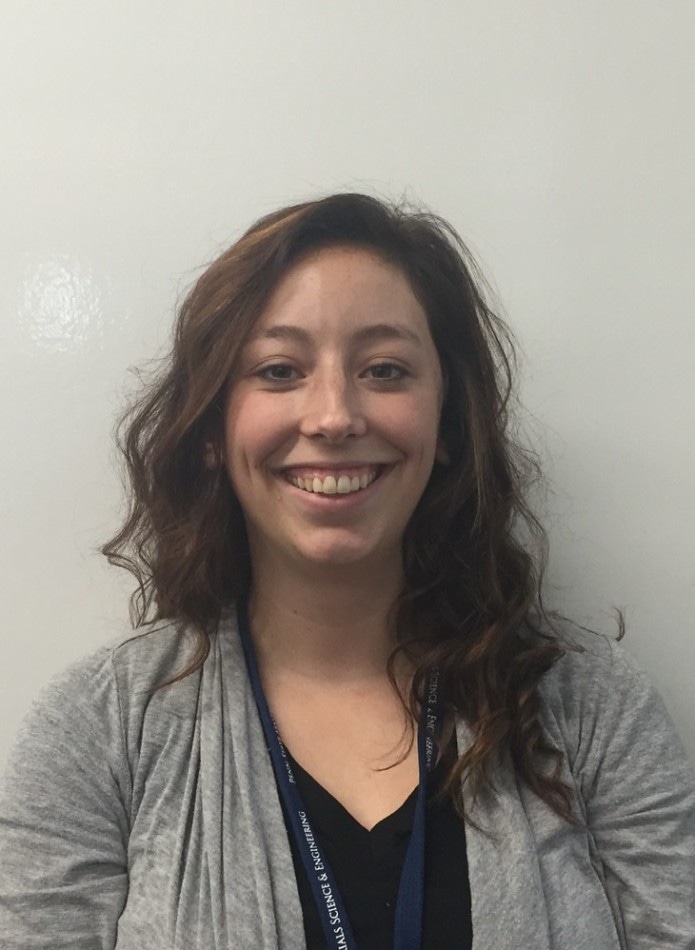Sep 21 2016
Cassie Marker will be spending her fall 2016 semester more than 600 miles away from Penn State’s University Park campus, where she normally conducts research and takes courses as a doctoral candidate in materials science and engineering. Marker received a grant through the U.S. Department of Energy to conduct research at Oak Ridge National Laboratory in Tennessee from Aug. 15 through Dec. 15, examining the fundamental properties of a variety of titanium alloys used in prosthetic implants.
 Cassie Marker, a materials science and engineering doctoral candidate, received a grant from the U.S. Department of Energy to investigate the properties of a variety of titanium alloys used in prosthetic implants. (Image: Cassie Marker)
Cassie Marker, a materials science and engineering doctoral candidate, received a grant from the U.S. Department of Energy to investigate the properties of a variety of titanium alloys used in prosthetic implants. (Image: Cassie Marker)
“One problem of many materials being used in implants is stress shielding,” said Marker. “The implant is more rigid than bone, so when you put stress on the joint the implant absorbs the stress, and the bone around it begins to lose density. This makes it harder to have revision surgery and loosens the implant, which could eventually cause it to fail.”
Titanium is biocompatible, very strong and relatively flexible when compared to other metals. However, it is expensive and, on its own, is still more rigid than bone. Implant makers attempt to reduce costs and increase flexibility by alloying titanium with other materials, specifically molybdenum, niobium, tantalum, tin and zirconium.
Alloying titanium with other materials will change the implant’s properties, and so will another factor: the phase of the alloy.
“A phase is basically how the atoms are arranged,” said Marker. “Some phases are cubic, some are hexagonal, and others take still different shapes. You start with the unit cell building block, and it multiplies many times in each direction. This phase affects all the properties of the material.”
At room temperature and standard pressure, titanium is in the hexagonal close packed phase. However, titanium’s best performance as an implant happens when titanium is in the ‘body-centered cubic’ phase. This can happen when it’s heated, pressurized and alloyed with an exact amount of specific alloys. This is where Marker’s research comes into play.
“For my thesis work, I’ve been developing a way that you can predict an alloy’s elasticity and thermodynamics based on its composition,” said Marker, whose doctoral research is supported by the National Science Foundation. “I’m helping to develop a database that will be open source and will let anyone know, for any combination of titanium alloys, what phase the material will be in, and what the elastic properties will be at the end.”
Marker is spending the semester shedding light on an anomaly that researchers encounter when alloying materials. Sometimes materials form into a ‘metastable’ phase, which means the material gets stuck in an unexpected phase and may eventually change phase.
“This really affects what my database is predicting,” said Marker, “and right now there’s no way to predict when these metastable phases will form or not form in titanium.”
Marker has a theory for predicting the seemingly random occurrences of metastable phases in titanium alloys. With funding from the DOE grant — and working in conjunction with her faculty adviser, Zi-Kui Liu, professor of materials science and engineering, Penn State, as well as collaborators Shun-Li Shang, senior scientist, Department of Materials Science and Engineering, Penn State; J.C. Zhao, professor of materials science and engineering, Ohio State University; and Michael Manley, senior researcher, Oak Ridge National Laboratory — Marker will put her ideas to the test.
The team will leverage Oak Ridge National Laboratory’s neutron scattering equipment. Neutron scattering allows researchers to understand properties of a sample by studying how a beam of neutrons bounces off the material. Interpreting this data could allow the researchers to assess the phase of each material in an alloy.
Ultimately, Marker hopes that her project will fill in gaps in our understanding of materials’ properties and improve the effectiveness of future implants.
“This is a great project that will let me combine my passion for computational materials design with an important application,” she said.
Source: http://www.psu.edu/